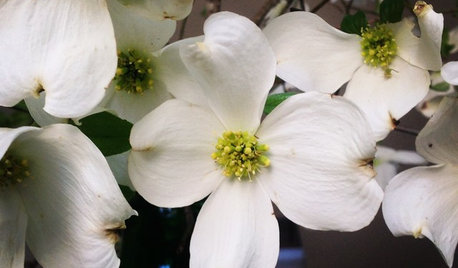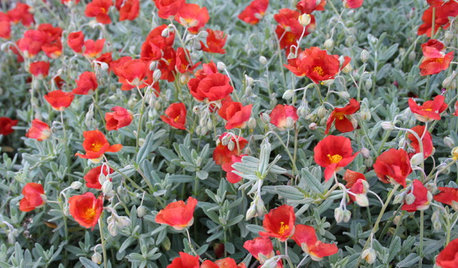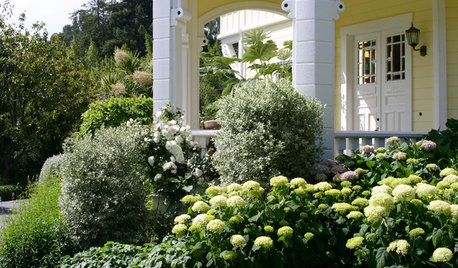Bloom Boosterssize>color>
How Much P is Enough?size>color>
Ideally: The goal of fertilizing containerized plants should center around the idea of providing all nutrients plants normally take from the soil and essential to normal growth, in the same ratio at which plants use the nutrients and at a concentration high enough to ensure no deficiencies, yet low enough to ensure the plant has no difficulty taking up water and the nutrients dissolved in water; the later resultant of a soil solution with an excessively high concentration of dissolved solids (salts).
Now, let's look at the role of fertilizers in general. There are 6 factors that affect plant growth and yield; they are: air, water, light, temperature, soil or media, and nutrients. Liebig's Law of Limiting Factors states the most deficient factor limits plant growth and increasing the supply of non-limiting factors will not increase plant growth [or bloom volume] (my emphasis). Only by increasing the most deficient factor will the plant growth increase. There is also an optimum combination of the factors and increasing them, individually or in various combinations, can lead to toxicity for the plant.
From the above, we can say that when any nutritional element is deficient in the soil, plant growth slows. We have a term for this occurrence: environmental dormancy. When the deficient element is restored to adequacy levels the environmental constraint caused by the deficient element is eliminated and plant growth can resume at a normal rate, as long as there are not additional limiting factors. Continuing to increase any element beyond the adequacy range offers no benefits and can deleteriously affect the plant - often in several ways, depending on the element.
Somewhere along the way, we curiously began to look at fertilizers as miraculous assemblages of growth drugs, and started interpreting the restorative (of normal growth) effect of fertilizer as stimulation beyond what a normal growth rate would be if all nutrients were adequately present in soils. It is no small wonder that we come away with the idea that there are ’miracle concoctions’ out there and often end up placing more hope than is reasonable in them. In couplet with the hope for the ‘miracle tonic’ is ‘more must be better’. I’ll use the latter idea as the lead-in for my thoughts on high-phosphorous fertilizer blends.
Among container growers you often find common belief that high-phosphorus (P) content fertilizers are a requirement for promotion of root growth and/or flowering. Fertilizer blends like 15-30-15, and even 10-52-10 are sold under names that imply that you actually NEED these formulas for plants to bloom well and to produce strong roots. Lets examine that idea in a little more depth.
While anecdotal evidence abounds, there is very little scientific evidence to show any need whatsoever for such products as they pertain to container culture. I’ve mentioned in other posts that high-P fertilizers are a historical carry-over from when it was most common for plants to be started in outdoor soil beds, the soil in which was usually still quite cold at sowing time. Both the solubility of P and plants’ ability to take it up are reduced in cold soils, so it was reasoned that fertilizing with high levels of P insured that at least some would be available during periods of growth in chilled soils.
We know that tissue analysis of leaves, roots, flowers - any of the live tissues of healthy plants will reveal that P is present in tissues at an average of 1/6 that of nitrogen (N) and about 1/4 that of potassium (K). Many plants even contain as much calcium as P. If we know that we cannot expect P to be found in higher concentrations in the roots and blooms than we find in foliage, how can we justify the belief that massive doses of P are important to their formation?
It is well known among experienced growers that withholding N when all other nutrients are available at adequate levels induces bloom production, even on smaller and younger plants. Though plants USE nutrients at approximately a 3:.5:2 ratio (note that N is 6 times the level of P, and K is 4 times the level of P), most greenhouse operations purposely fertilize with something very near a 2:1:2 ratio to limit vegetative growth so they can sell a sturdy compact plant sporting pretty blooms to tempt you.
Simply limiting N limits vegetative growth, but it does nothing to limit photosynthesis. The plant keeps making food, but it cannot use it to grow leaves and extend stems because of the lack of N. To where should we imagine the energy goes? It goes into producing blooms and fruit.
What harm might there be in a little extra P in our soils? First consider that the popular 10-52-10 has almost 32 times more P than a huge percentage of plants could ever use. Even 1:1:1 fertilizer formulas like the popular 20-20-20 are already high P formulas because they have 6.25 times more P (in relation to N) than plants require to grow robustly and normally.
Evidence of phosphate over-fertilizing usually always includes some degree of leaf chlorosis. P competes with iron (Fe) and manganese (Mn) ions for attachment sites and causes antagonistic deficiencies of these micronutrients. Unfortunately, the deficiency of these elements causes interveinal chlorosis (yellowing), and the first thing we normally consider as a fix for yellow leaves is more fertilizer, so we give the plants a good dose of our favorite bloom-bomb which causes, no surprise - worsening of the condition. Excess P also raises pH unnecessarily, which binds most micronutrients to other elements in soils, making them insoluble and unavailable
I’ll close with an anecdote of how I used to fertilize plants with showy blooms before I had a better understanding of the overall picture. I would fertilize with a "bloom-boosting" fertilizer as long as foliage was bright green. As foliage inevitably yellowed, I would then switch to a high N formula until the color returned and start the cycle over again. I THOUGHT that the P was helping produce blooms and the yellowing was caused by a lack of N, which I quickly jumped to correct at the first evidence of yellow. I now understand that the high levels of P were what were causing the yellowing and it was not my returning to a high N formula that greened the plant up again, it was the reduction in the level of P in the soil when I stopped using the high-P formulation.
Fertilizers in a 3:1:2 RATIO provide NPK nutrition in a ratio as close to that actually used by plants as you are likely to find commonly available. Ratio is different than the NPK %s. If you remember reducing fractions to their lowest common denominator, you sort of have a handle on the relation of 'ratio' to '%s". If we reduce 24-8-16, 12-4-8, and 9-3-6 to their lowest common denominators, we come up with a ratio of N to P to K of 3:1:2 in each of the NPK formulations. Ultimately, they all deliver roughly the same amount of NPK if you follow directions because you will be instructed to use twice as much 24-8-16 as 12-4-8, and so on.
3:1:2 ratio fertilizers have all the P plants need to bloom well. Increasing the % of P beyond the 3:1, N:P ratio carries very little likelihood of being a benefit to the plant; instead, the probability lies close to the realm of certainty that the potential to limit is inherent in high P fertilizers for containerized plants.
Al














the_first_kms2
Loveplants2 8b Virginia Beach, Virginia
Related Discussions
The uselessness of high phosphorus levels
Q
Vanda: Fertilize water w/...root hormone? bloom booster? or...
Q
Miracle Grow Bloom Booster
Q
Fertilizer for Hoyas?
Q
elucas101
tapla (mid-Michigan, USDA z5b-6a)Original Author
the_first_kms2
labland
AllanRandall
tommyc